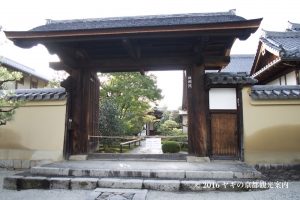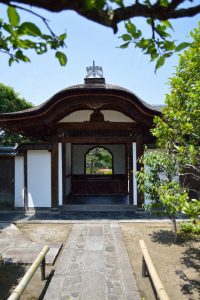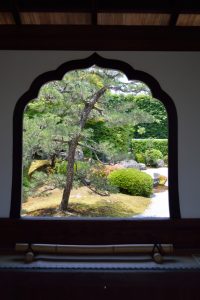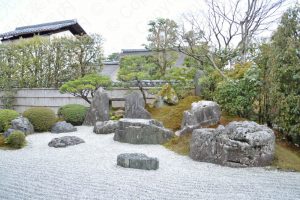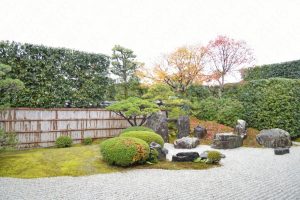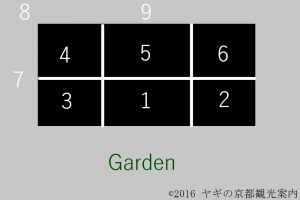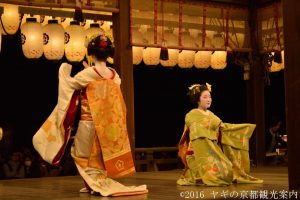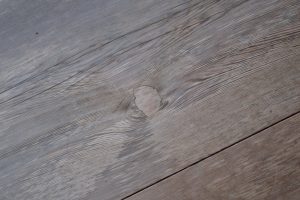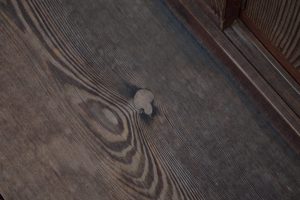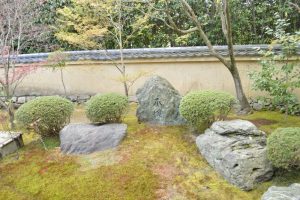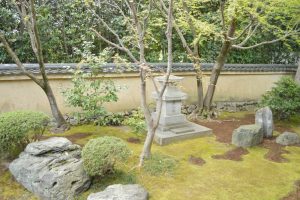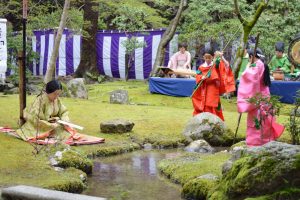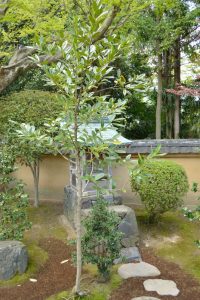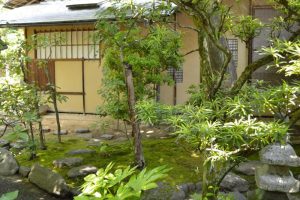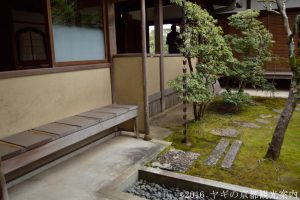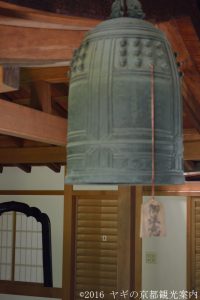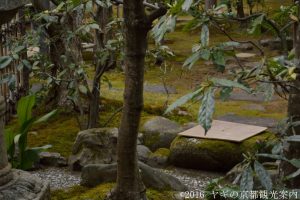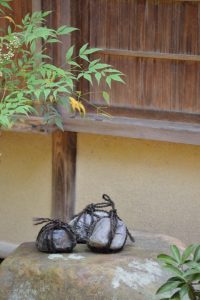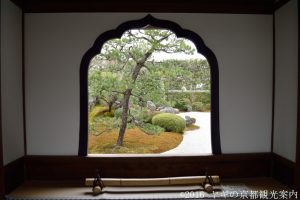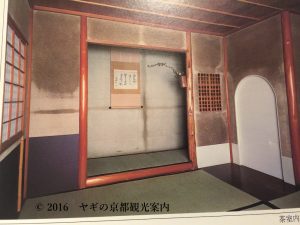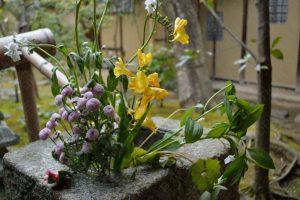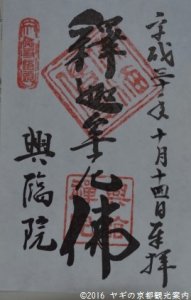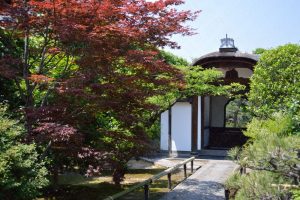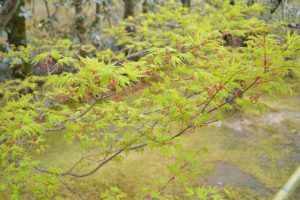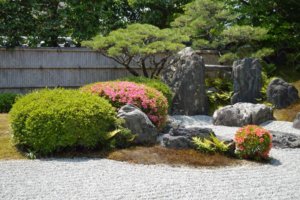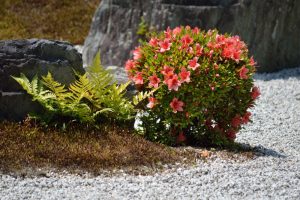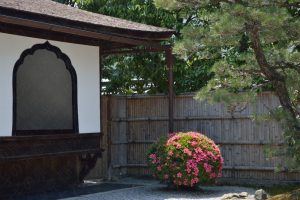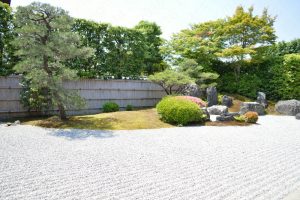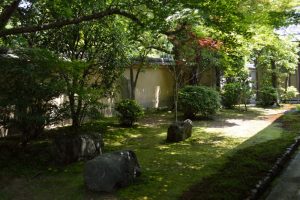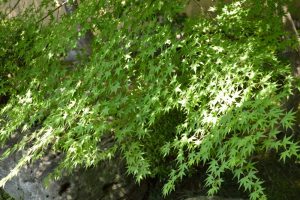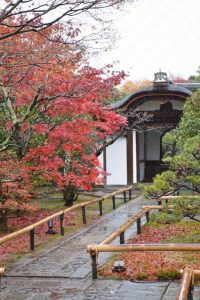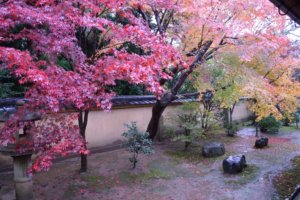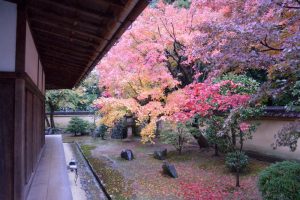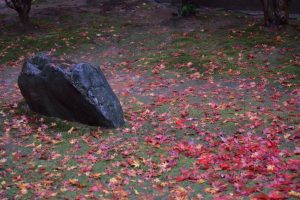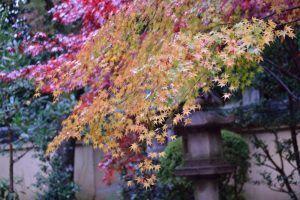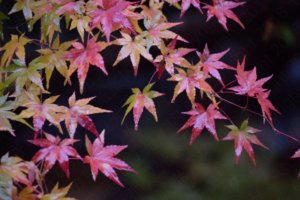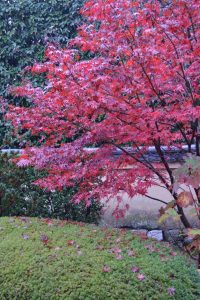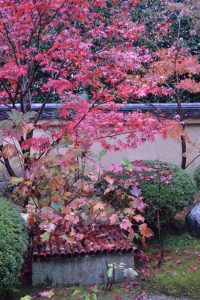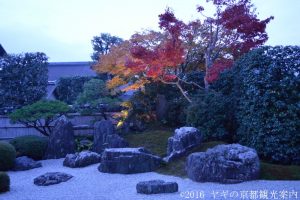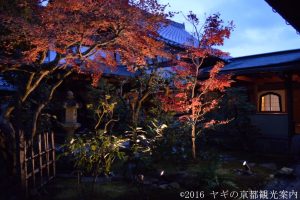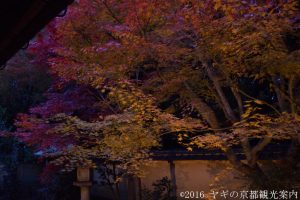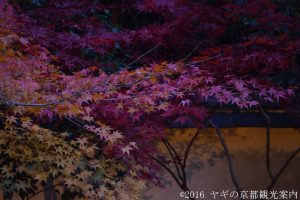Autumn leaves 2022

On Nov. 26th, Migoro.
A short history of Kohrin-in
In the 1520’s, Hatakeyama Yoshifusa, the federal lord of Noto region (Today’s Ishikawa and Toyama prefecture) founded a small sub-temple of Daitokuji temple. The temple was named “Korin-in” after the Buddhist name of the founder. He invited “Shoh-kei”, the most reliable monk of Daitokuji as a co-founder. In a decade, the temple was caught by the fire and burnt down and the Hatakeyamas went into decline.
In 1581, Maeda Toshiie, one of the most prosperous federal lord at that time in Kaga, today’s Ishikawa pref., made a great contribution to the restoration of the temple and make the temple his “Bodai-ji”.
Each Japanese family belongs to Bodai-ji and we worship our ancestors there. It may sound strange a lord of Kaga (It is about 160 mile from Kyoto to Kaga.) had a family temple in Kyoto but he had a good reason. In those days, to have a family temple in the capital is a thing to be proud of.
From 1975 to 1978, the temple restored anew. Some gates and the dry rock garden was reconstructed and “Kuri”, a residence of monks.
These days, it opens to public during short periods of time in spring and fall.
The construction of Kohrin-in
The entrance gate 表門
This is one of the oldest gate and classified as Important Cultural Property of Japan.
Karamon 唐門
Building in a typical Zen-style in Muromachi period (1336 – 1573). It is also classified as Important Cultural Property of Japan.
It has a window called “Kato mado (花頭窓)”. There is a built-in bench in front of it.
In the days of old, visitors waited on it, and admire the garden taking advantage of the window as a frame. (Today it is prohibited to be seated on it.)
The dry garden 方丈前庭園(水源一滴の庭)
The garden was rebuilt in the restoration in the 1974 by Kinsaku Nakane, a famous gardener in the 20th century.
Sometimes, we cannot tell what a dry garden in Zen temple means but it is not the case of the garden in Korin-in.
Take a look at the picture. In front of it, we can see a rock bridge. It stands for a bridge in Kokusei-ji temple in the ancient China. The temple gave birth to the Tendai school of the Buddhism. In the ancient times, hermits called “Kanzan” and “Jittoku” inhabited there. Zen monks admire the way of life they took and often draw them in a hand scroll and make poem about them.
Take another look at the garden. Behind the bridge, there are mountains. They stand for Mt Horais. In the ancient China, it is believed that “Sennin” lives there. Sennin is a hermit who exercise the art of eternity in deserted place.
In front of the mountains, there is a place filled with white sands. It means ocean.
This garden means : A rain drop fell on the Mt. Horais make a stream and runs under the bridge. In the end, it make vast ocean.
It implies the way the Buddhism spread around all over the world.
Hojo 方丈
“Hojo” is a building in Buddhist temple.The hojo in Kohrin-in is built in the typical Zen fashion. Take a look at the picture above. The Hojo has 6 rooms. Let us discuss about them. (Sorry, we are not allowed to take picture!)
1 Shichyu 室中
Shichyu is the most important room in Hojo. There are statue of Buddha and a monk called “Shoh-kei”, the monk who co-fouded Kohrin-in.
Usually, a statue of a deity in a temple stays at the center in front of the back wall but there is a statue of Shoh-kei at the center instead in Kohrin-in. This is a peculiarity in a temple of the Daitokuji school. They put a statue of the co-founder of a temple at the center.
2 Rai no ma 礼の間
This is a reception room. It has “Shohji”, kind of sliding doors work as wall. An artist named Beisai Muraishi painted grape vines on them. They are printed in very subtle way. The leaves looks like birds who are flying away.
3 Danna no ma 檀那の間
“Danna” is a patron of temple. After the reception room, they go to the room.
In Zen temple, Danna no ma is the best place to admire the garden because V.I.P.s are deserved to the privilege to be there. Almost all Zen temples, including Korin-in, don’t allow us to be in Danna no ma. All we can do is to see the garden in front of it.
4 Ehatsu/Ihatsu no ma 衣鉢の間
A dressing room. Ihatsu has a special meaning. “I” means garment of Buddhist monk and “Hatsu” means a bowl they uses. In Japanese saying, “We inherit the Ihatsu.”. Buddhist monk inherits the necessities, i.e. I and Hatsu from elder monk.
When we learn something important from others, we say “We inherit the Ihatsu.”. For example, we can say a maiko (She is an apprentice of geiko) inherits Ihatsu from an elder geiko.
5 Minzo 眠蔵
Minzo stands for ” a place to sleep”. Actually a monk used to sleep there because he could go into Shichyu and bring important things out there in case of emergency like fire.
6 Shoin 書院
Shoin is a tiny study for monk.The shoin in Korin-in is a replica of the origin of shoin. (We can see it at Ginkakuji temple.)
Corridor
There are corridors around Hojo. We can find something funny on them. The soup bowl and mushroom. The carpenter put these into knots of corridor.
7 Tsume zuka and Kinshin toh 爪塚と琴心塔
Things related to Koto, a strumming instruments is enshrined there.
The woman at the center of the picture plays the Koto.
8 Tara yoh jyu 多羅葉樹
Before paper was invented, we used leaf of the tree as post card. We wrote down letters with bamboo pencil. Even in these days, we use it as post card.
9 Back yard
You can see something beyond words. We discuss about it later.
Kankyo tei, a tea room(涵虚亭)
Kankyo tei (涵虚亭) was named after the poem written by Su Shi, a Chinese poet in the 11th century. The word 涵 means fertility, 虚 means void and 亭 means hut. I suspect the name has something to do with Yin-yang philosophy. It is donated by Gendo Yamaguchi, a prosperous merchant in the 1920’s.
Today, it is not used as tea room but let us learn about how we enter it.
We are seated on the bench.
The bell is rang.
We walk on the passage indicated by stones.
We wash our hands at wash basin and head for the entrance.
Kankyo tei has two entrances. One is “Nijiri guchi” and the other is “Kijin/Kinin guchi”.
Nijiri guchi is a traditional entrance of tea house. It is a small sliding door and we bent down to get into a room. It is based on the Zen creed : we have to bent down knees with no consideration to the classes we belong because we are treated equal in tea room.
Kankyo tei was built in the 20th century, it is under the modern influence and has Kijin/Kinin guchi. We don’t bent down when we enter room through it.
In front of Kijin/Kinin guchi, there are stones tightened with rope. These stones called “Seki mori ishi”. They say “Don’t enter here.”. I suppose the host here believes eveyone must be treated equal.
Take a look at Katoh mado of the entrance again. There are bamboos put together with rope. They has the same meaning as Seki mori ishi. In this case, it means “Don’t be seated.”.
ATTENTION : We are not allowed to enter the room and take picture. It is a photo of a postcard I bought at Korin-in. We always can see the room behind the white arched door.
When we entered the room by Nijiri guci, it looks like this. The room is called “Sumi ita tsuki yojyo daime chashitsu”.
“Sumi ita tsuki” means “With sumi ita”. Sumi ita is a small wooden floor in front of the white door. In this room, a Host is seated to the right to the door to serve tea to guests. At tea ceremony, the host explains what a hand scroll hanging on the wall means but she/he cannot see it in the place they are in. So, they seat themselves on sumi ita to see it.
“Yojo” means “four tatami mats” and “daime” is a kind of tatami mat. “Chashitsu” is tea room.
In a nutshell, “Sumi ita tsuki yojyo daime chashitsu” means “A tearoom that has four daime-tatami mats and sumi ita on which a host to sit”.
That is a traditional way to enter the room.
These days, we enter the room by way of corridor to observe the room.
Gosyuin of Korin-in
In this fall, we can have Goshuin of Korin-in temple. 300 yen.
Spring time in Kohrin-in
We have Japanese maple at the entrance. The red ones and the green ones. The green ones turn red.
We can see tiny flowers of Japanese maple.
In rock garden, there are flowers called “Satsuki”.
In the back yard, we enjoy green maples. The prelude for the autumn colors.
Autumn in Kohrin-in
The leaves in the passage to the entrance is rather common autumn colors.
But in the back yard, we admire the most beautiful autumn leaves in Kyoto. They tuns colors in sensitive and exquisite way. Beyond words!
We cannot see these colors in any other places.
This color is fantastic. Half red, half purple.
Around twilight, Korin-in is illuminated. Beyond description, BAAAAAAH!!!!
About Kohrin-in
Official name Kohrin-in 興臨院
Address Kyoto city, Kita ward, Murasakino Daitokuji cho, 80, 603-8231
Phone no. 075-491-7636
Official Website : Not available. You can have info. on Kohrinin at Kyoto shyunju website.
Open schedule in spring : 2018 March 17– June 10 (Except March 20 and 21)
Open hours : 10:00am – 4:30pm
Entrance admission fee :Adult 600yen, High school student and Junior high school student 400yen, Primary school children 300yen
Access to Kohrin-in
From JR Kyoto sta.
Take kyoto municipal subway karasuma line for Kokusai kaikan and get off train at Kitaoji sta.
Go to Kitaoji bus terminal adjacent to Kitaoji sta..
At G bus stop in Kitaoji bus terminal, take bus no. 206.
Get off bus at Daitokuji-mae bus stop.
ヤギの京都観光案内/KYOTO GOAT BLOGをもっと見る
購読すると最新の投稿がメールで送信されます。


